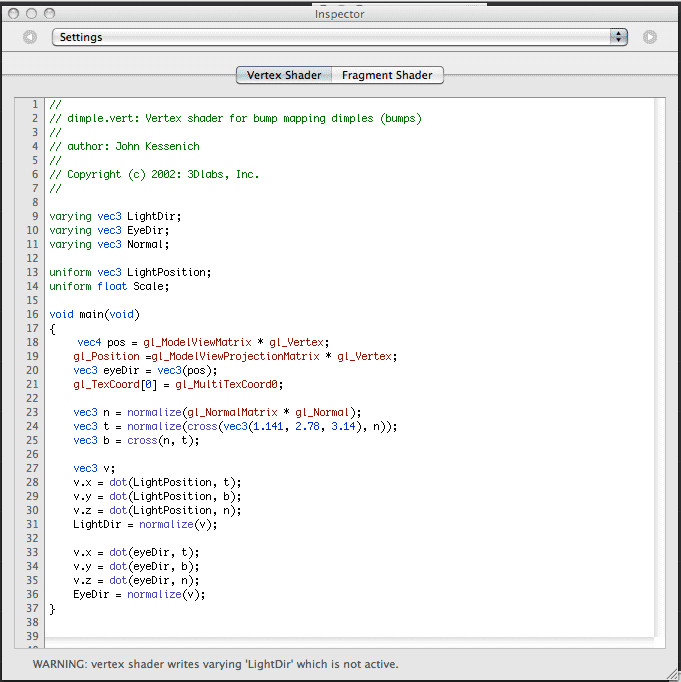 | ||
Overview of glsl the opengl shading language
OpenGL Shading Language (abbreviated: GLSL or GLslang), is a high-level shading language with a syntax based on the C programming language. It was created by the OpenGL ARB (OpenGL Architecture Review Board) to give developers more direct control of the graphics pipeline without having to use ARB assembly language or hardware-specific languages.
Contents
- Overview of glsl the opengl shading language
- Background
- Versions
- Operators
- Functions and control structures
- Compilation and execution
- Books
- References
Background
With advances in graphics cards, new features have been added to allow for increased flexibility in the rendering pipeline at the vertex and fragment level. Programmability at this level is achieved with the use of fragment and vertex shaders.
Originally, this functionality was achieved by writing shaders in ARB assembly language – a complex and unintuitive task. The OpenGL ARB created the OpenGL Shading Language to provide a more intuitive method for programming the graphics processing unit while maintaining the open standards advantage that has driven OpenGL throughout its history.
Originally introduced as an extension to OpenGL 1.4, GLSL was formally included into the OpenGL 2.0 core in 2004 by the OpenGL ARB. It was the first major revision to OpenGL since the creation of OpenGL 1.0 in 1992.
Some benefits of using GLSL are:
Versions
GLSL versions have evolved alongside specific versions of the OpenGL API. It is only with OpenGL versions 3.3 and above that the GLSL and OpenGL major and minor version numbers match. These versions for GLSL and OpenGL are related in the following table:
Operators
GLSL contains the operators in C and C++, with the exception of pointers. Bitwise operators were added in version 1.30.
Functions and control structures
Similar to the C programming language, GLSL supports loops and branching, for instance: if-else, for, switch, etc. Recursion is forbidden.
User-defined functions are supported and built-in functions are provided. The graphics card manufacturer may optimize built-in functions at the hardware level. Many of these functions are similar to those in the math library of the C programming language while others are specific to graphics programming.
Compilation and execution
GLSL shaders are not stand-alone applications; they require an application that utilizes the OpenGL API, which is available on many different platforms (e.g., GNU/Linux, macOS, Windows). There are language bindings for C, C++, C#, Delphi, Java and many more.
GLSL shaders themselves are simply a set of strings that are passed to the hardware vendor's driver for compilation from within an application using the OpenGL API's entry points. Shaders can be created on the fly from within an application, or read-in as text files, but must be sent to the driver in the form of a string.
The set of APIs used to compile, link, and pass parameters to GLSL programs are specified in three OpenGL extensions, and became part of core OpenGL as of OpenGL Version 2.0. The API was expanded with geometry shaders in OpenGL 3.2, tessellation shaders in OpenGL 4.0 and compute shaders in OpenGL 4.3. These OpenGL APIs are found in the extensions:
